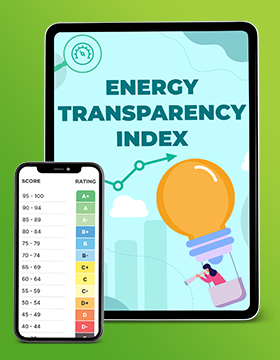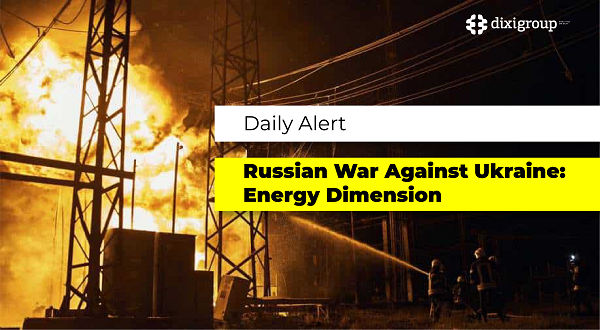Market paradox: war risks are rising, but oil is not
Why barrels have lost value despite geopolitical tensions in the Middle East

The full-scale war between Israel and Iran has tested the oil market, which seemed to have become accustomed to a year and a half of constant escalation in the Middle East.
On June 13, when the conflict in the Persian Gulf, the world's main oil treasure trove, began to escalate, the price of a barrel of Brent crude rose to $78 - almost a quarter higher than at the beginning of the month. A few days later, when the initial excitement subsided, oil continued to trade above $70. But after the US Air Force's B-2 stealth bombers struck Iran's fortified nuclear facilities during Operation Northern Hammer on the night of June 22, oil prices unexpectedly fell as markets opened, and by the evening of June 24 were approaching $67 per barrel.
"Ukrainian Energy" has examined the reasons for this downward trend, as well as the accompanying processes that continue to determine the situation on the oil market, and the risks that create a new wave of tension.
Fragile agreements
On the morning of Tuesday, June 24, a ceasefire between Israel and Iran, which the parties agreed on through the mediation of the United States, came into force. Financial markets reacted to this event with growth: futures on European and American indices rose, the MSCI Asia Pacific index added about 2%, the South Korean Kospi - up to 2.9%. Brent oil continued to fall in price and lost another 5%, temporarily falling below $67 per barrel, gold fell by 1.3%.
US President Donald Trump hopes that the ceasefire he announced will last "forever". "I believe that the ceasefire has no limits. It will last forever,” he said in an interview with NBC News. An unnamed Israeli official told the channel that the ceasefire will hold if both sides stick to it.
The step-by-step ceasefire plan unveiled by Trump calls for Iran to first cease fire for 12 hours, followed by Israel, and after 24 hours, an official end to the war would be declared. Provided that both sides observe a “calm down period” during these days.
Oil prices have fallen in anticipation of a lasting peace in the Middle East. With the conflict now looking likely to end, analysts expect them to fall back to the low $60s.
This mood is reinforced by the fact that, even against the backdrop of reports of escalation in the Middle East, oil prices began to fall on Monday, when the price of Brent fell by 8.5%, to $70.4 per barrel - this is the lowest level since the "pre-war" time, if we consider the beginning of the war to be the Israeli strikes on Iranian nuclear facilities on June 13. This happened after Iran, in response to American attacks, launched a missile attack on the US Al-Udeid air base located in Qatar.
The information field before the strike looked tense: the UAE, Qatar, Iraq, Kuwait and Bahrain one after another announced the closure of airspace, and the US and British embassies warned their citizens about a possible threat.
However, as it turned out later, the strike was symbolic: it took place after a warning about the planned launch, which Iran gave not only to the Qatari authorities, but also to the Americans. “I want to thank Iran for the warning that allowed us to avoid casualties,” Donald Trump wrote in Truth, calling Iran’s response “very weak.”
According to oil market participants, the symbolic strike indicates that Tehran is refraining from more radical actions, primarily from attempts to block the Strait of Hormuz, which plays a key role in global energy traffic.
Markets believed in a detente
The Strait of Hormuz is a narrow sea passage connecting the Persian and Oman Gulfs and leading to the Arabian Sea in the northern Indian Ocean. Its strategic importance is explained by the fact that about a fifth of the world’s oil and liquefied natural gas (LNG) supplies pass through it. If the strait is blocked, global oil prices could rise above $100 per barrel, analysts at investment bank Goldman Sachs predict. JP Morgan expects the price to be at $120-130 per barrel in such a scenario.
However, the war has not yet affected tanker loadings in the Persian Gulf, according to data from Lloyd’s List Intelligence, which tracks shipping. This is helping to keep markets relatively calm despite the threat of a blockade of Hormuz.
One key reason for this is that the conflict appears to have been resolved relatively quickly, leaving market participants less time to worry about future attacks. But another explanation for traders' relative calm is record levels of U.S. shale oil production, which has provided Washington with a measure of "geopolitical insurance."
This month, the United States had its first week in 50 years without importing a drop of Saudi oil, Bloomberg notes, for only the second time in history. This "gives the U.S. president more freedom to take military action in the Middle East without fear of the consequences of a spike in domestic gasoline prices."
Trump, for his part, used the conflict this week to once again call for increased drilling in the United States, but given the moderate prices, American oil companies are already working at full capacity. So, entering the conflict between Israel and Iran, prices had “headroom” to rise without the risk of consumer panic. In addition, with the emergence of an increasing number of energy alternatives, the world is becoming less sensitive to oil shocks.
The Polymarket platform (an American forecast market) as of Monday morning estimated the probability of a blockade of the Strait of Hormuz by the end of June at 25%, by the end of the year - at 47%, and by Tuesday evening both risks had fallen to 2% and 16%, respectively. The expert consensus now is that Iran is generally not interested in further escalating the conflict.
Part of the problem is that Tehran is almost entirely economically dependent on China, which buys 90% of Iranian oil, meaning that blocking the Strait of Hormuz, the main conduit for these exports, could hurt Iran as much as it would its adversaries. In fact, Rystad Energy data shows that oil traffic through the strait has actually increased over the past week during the height of the war, likely part of Iran’s strategy to divert crude supplies from Kharg Island and other export hubs that could be targeted.
“Historically, outbreaks of conflict in the Middle East have certainly caused price spikes but not real market shifts — partly because the expected supply shortages never materialized,” OCBC strategist Vasu Menon was quoted as saying by Bloomberg.
US rescue plan
“The fact that the Middle East conflict has erupted and (for now at least) died down without an energy crisis is a testament to the geopolitical power of the slogan “drill, baby, drill,” which has become Donald Trump’s favorite mantra,” Bloomberg notes.
The agency has learned that in the event of serious problems with the supply of oil from the Middle East, the Trump administration has developed a plan to compensate for the shortage of its supply on the market.
“Discussions of these plans began several weeks before the American strikes. And although Trump announced a ceasefire between Israel and Iran on Tuesday, tensions in the region, which provides almost a third of the world’s oil supplies, remain,” analysts interviewed by Bloomberg believe.
According to sources, the Trump administration has considered several scenarios to prevent a jump in oil prices. Among them is the possibility of “opening” the US Strategic Petroleum Reserve, which has been reduced by almost half under Joe Biden to 400 million barrels. But analysts say even an emergency release would not be enough to offset the potential loss of millions of barrels a day if supplies through the Strait of Hormuz are disrupted. Other options include invoking the Defense Production Act of 1950 to force US companies to bring more oil to market in return for tax breaks.
Long-term risks
While the strait remains open, the risk of its closure or attack has already driven up insurance costs and forced more and more non-energy cargoes to take a detour – a longer route around the southern tip of Africa. “This longer route means more greenhouse gas emissions, as well as a higher risk of accidents involving tankers from the ‘shadow fleet’ used by Russia to circumvent sanctions,” explained Stamatis Tsantanis, CEO of shipping company Seanergy Maritime Holding.
“From a maritime logistics and cargo perspective, the mere threat of a blockade of the Strait of Hormuz is enough to destabilize global logistics, causing significant instability in the very heart of the global energy system – the Middle East,” analysts at logistics company Intermodal (Greece) wrote in their newsletter.
They also noted that while Iran’s threat to close the Strait is more of a strategic gesture than a sign of a long-term impact, the implications for maritime logistics, insurance and freight are already being felt, with “ship insurance rates and, consequently, freight rates, have already increased significantly.”
Lord John Brown, former BP chief executive and co-founder of BeyondNetZero, noted in a post on X that the ongoing instability in the Middle East is keeping energy markets under pressure due to potential supply shortages and rising prices. “Stockpiles and excess capacity are important buffers, but the vulnerability of the Strait of Hormuz always makes delivery risky. This means we must redouble our energy security planning. This is not an alternative to energy transition, but a recognition that energy security remains under attack. "Therefore, we must accelerate decarbonization, the transition to low-carbon and carbon-free fuels, where possible, in order to reduce overall demand for fossil fuels and their import purchases," he concluded.
Svitlana Dolinchuk, specially for Ukrainian Energy








